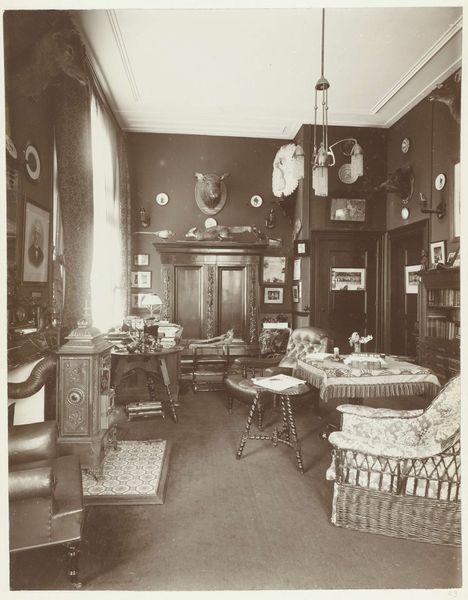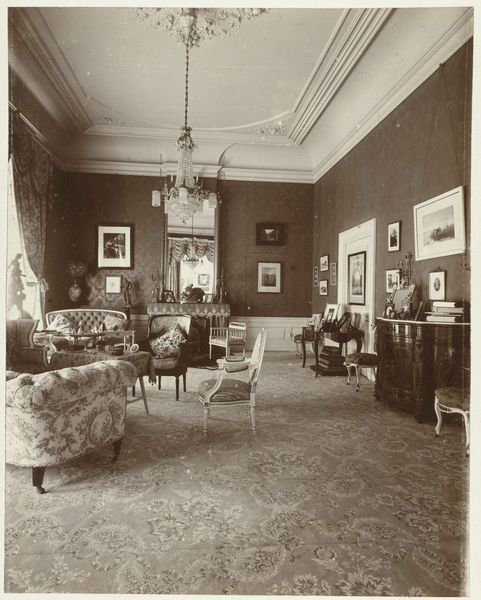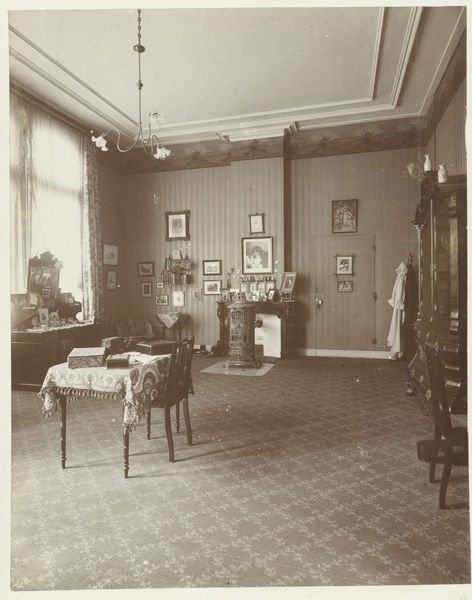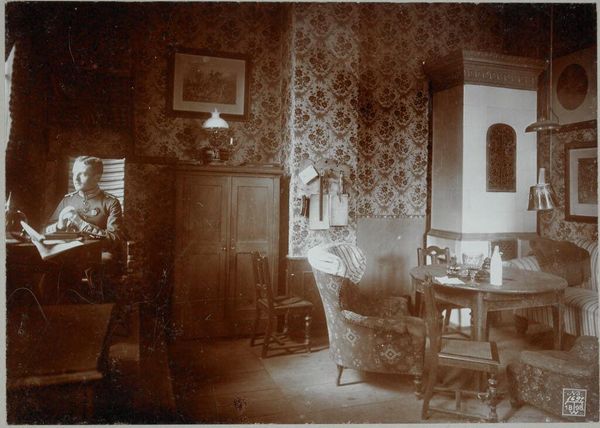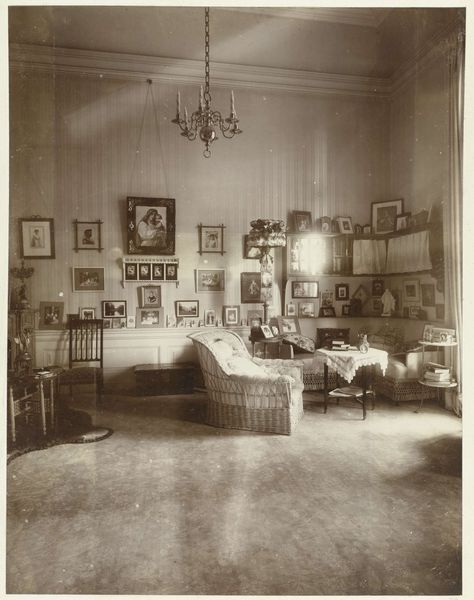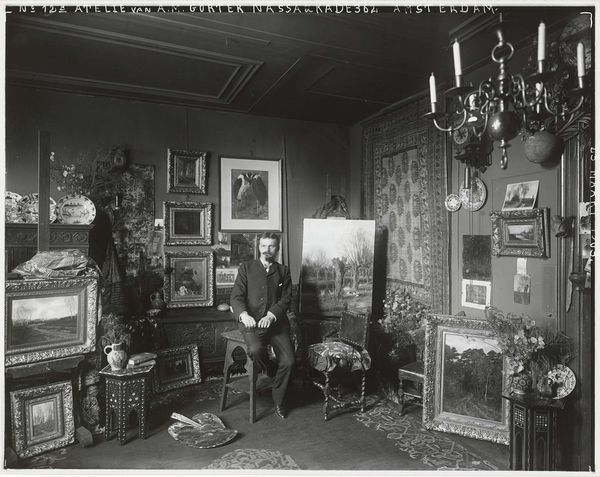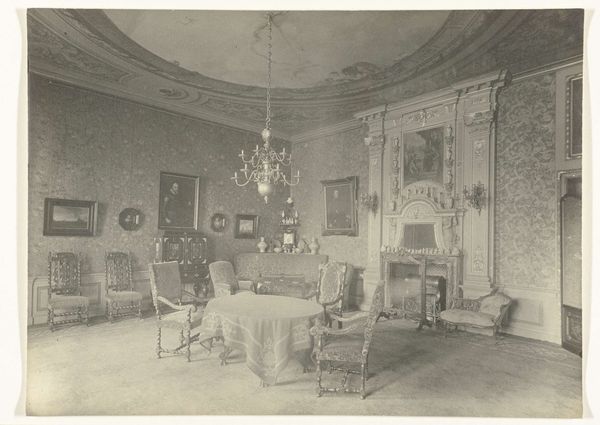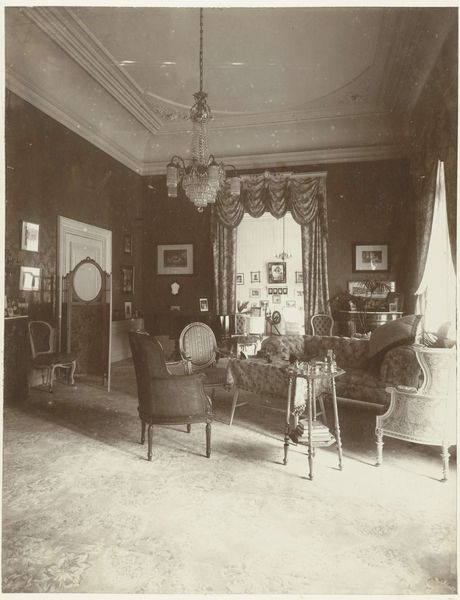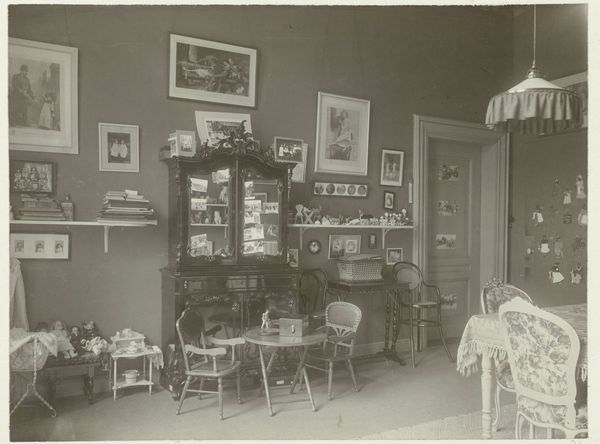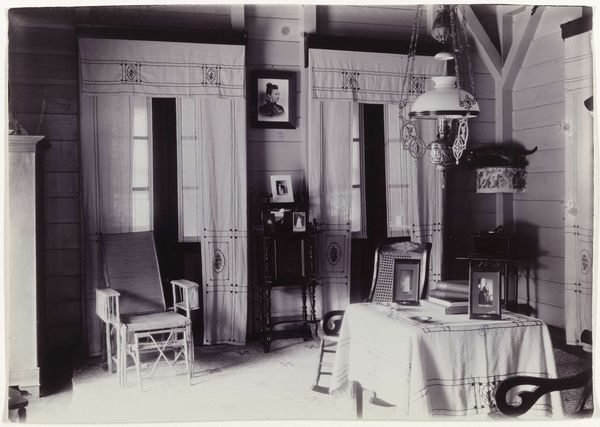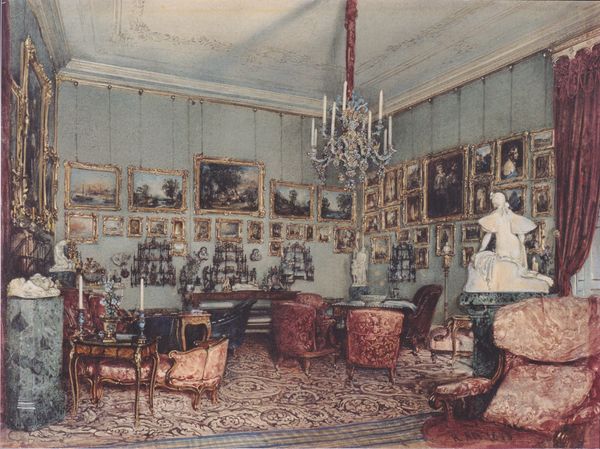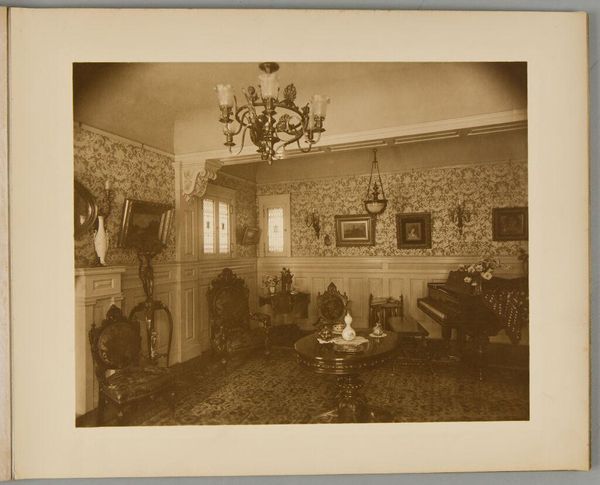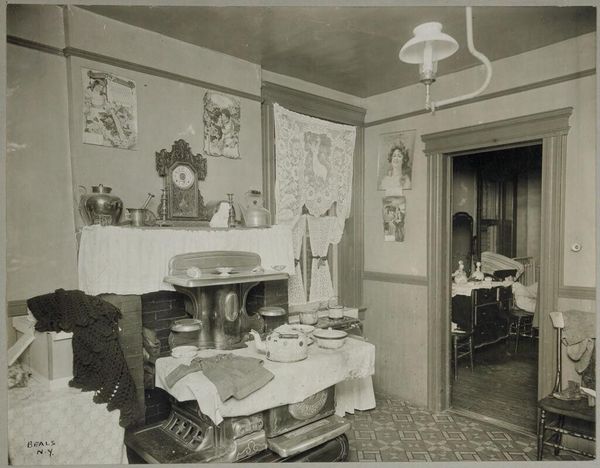
Het boudoir van Johanna Elisabeth ('Sissy') Boissevain, de echtgenote van de fotograaf c. 1902 - 1910
0:00
0:00
henrypauwvanwieldrecht
Rijksmuseum
photography
#
portrait
#
photography
#
black and white theme
#
intimism
#
framed image
#
black and white
#
surrealism
#
genre-painting
Dimensions: height 225 mm, width 164 mm
Copyright: Rijks Museum: Open Domain
Curator: Let’s take a look at "Het boudoir van Johanna Elisabeth ('Sissy') Boissevain, de echtgenote van de fotograaf," an early 20th-century photograph, circa 1902 to 1910. Editor: It feels intensely private, doesn’t it? A bit claustrophobic with the busy wallpaper and myriad images hanging on the walls. Curator: Precisely. It’s interesting to note the photographer, Henry Pauw van Wieldrecht, chose his own wife and her personal space as his subject. This black-and-white photography opens a window into intimate domestic life of the period. I'm interested in how it plays with space, framing the subject. Editor: The sheer volume of images displayed! From portraits to genre scenes, they all coalesce into a collective family history, wouldn't you agree? I can pick out so many little narratives from what is on display! Curator: Absolutely. This points to a society deeply invested in visual documentation and memory. The presence of what seems like family pictures, landscapes, possibly even theatre scenes underscores how carefully they crafted their domestic aesthetic. Editor: There is something very poignant about the arrangement and presentation. The way they mix high art with family memories blurs that boundary. This speaks volumes about what they consider "worthy" of display. What materials they consider appropriate for self-presentation. Curator: Indeed. Van Wieldrecht captures more than just a room; he's preserving the social fabric and personal narratives woven within it. It offers us an interesting consideration of domestic production. What can the labor of creating a beautiful life communicate, beyond purely feminine spheres? Editor: Exactly! And by visually curating her own space so thoughtfully, "Sissy" makes a silent yet powerful assertion of self. Curator: It certainly encourages us to consider how domestic spaces have changed—or perhaps not changed at all—in their function as expressions of identity and cultural memory. Editor: Agreed. It reminds me that visual language transcends time, continuously shaping our understanding of ourselves and our histories.
Comments
No comments
Be the first to comment and join the conversation on the ultimate creative platform.
